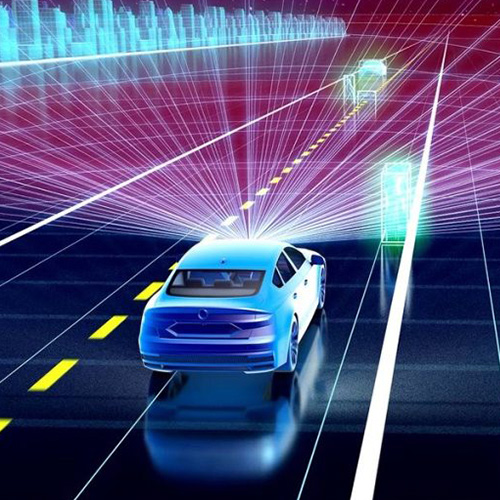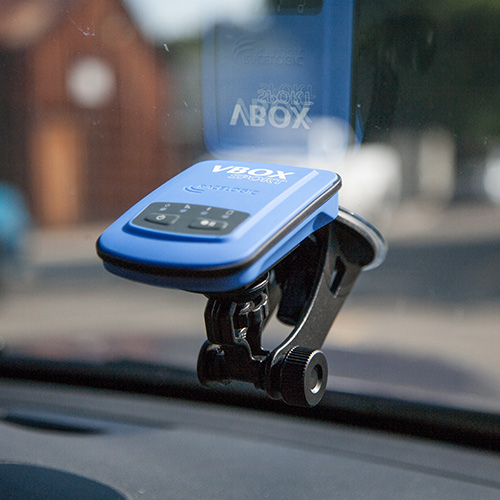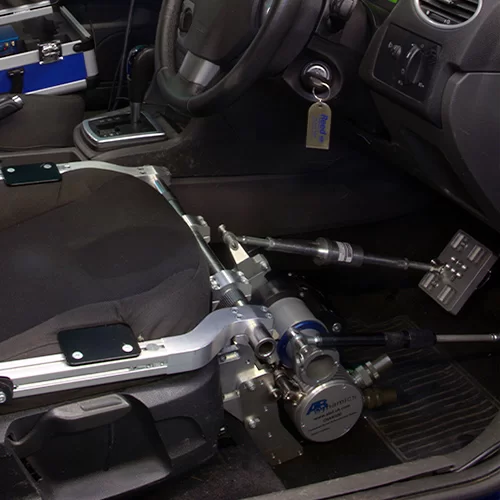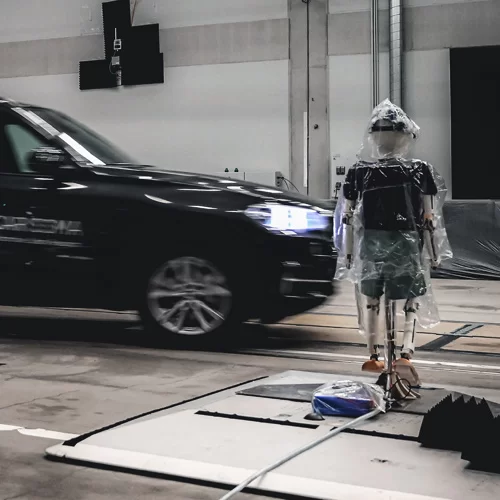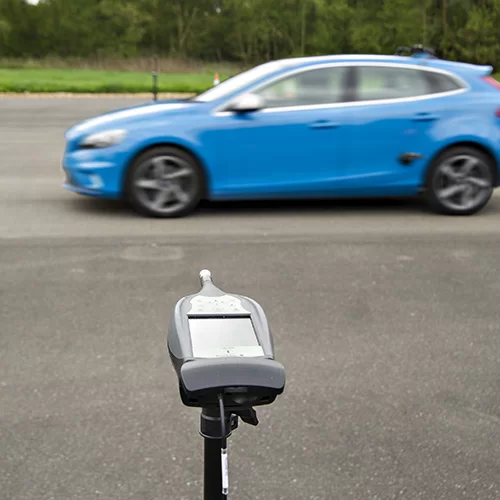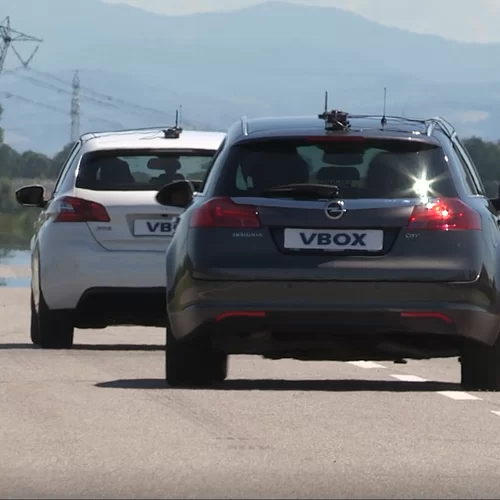VBOX systems provide a simple and accurate way to test and validate Advanced Driver Assistance systems.
VBOX systems provide a simple and accurate way to test and validate Advanced Driver Assistance systems.
With real-time measurements of parameters from up to three vehicles and at less than 2cm positional accuracy, the Racelogic VBOX ADAS testing system allows developers to easily verify the effectiveness of their products.
Customers like Honda, Nissan, GM, Autoliv, and Toyota use VBOX ADAS equipment to test their safety systems.
At the core of the system is the VBOX 3i Dual Antenna with RTK, connected via radio telemetry to an RTK Base Station, or to another VBOX 3i acting as a 'moving base'.
VBOX ADAS products allow for testing and validation of a recognised industry standards, such as ISO 15622 (Adaptive Cruise Control), ISO 15623 (Forward Collision Mitigation) and NCAP confirmation tests.
AEB and FCW are necessary features if a new passenger vehicle is to achieve a five-star Euro NCAP rating. By 2018 AEB and Lane Departure Warning systems will be mandatory for all new commercial vehicles throughout Europe (UNECE Regulation on AEBS steps 1 and 2).
VBOX equipment provides positional accuracy to 2cm along with a real-time output of the relevant parameters required to develop such systems. When used in conjunction with Euro NCAP-approved steering and pedal robots, the VBOX 3i Dual Antenna with RTK (VB3iSLR) outputs data that meets the requirements set out in the NCAP assessment.
Less than 2cm positional accuracy
Compatible with driverless robot systems
Synchronised video
500m vehicle to vehicle range for open road testing
Multiple contact points
Capture of AEB / FC warning signals via CAN or digital/analogue inputs
Easy to transport and install
Low latency
Real-time output of all measured parameters
Speed of target and subject vehicle
(0.1km/h RMS)
Longitudinal separation (0.02m RMS)
Lateral separation (0.02m RMS)
Time to collision (0.05s)
Yaw rate for target and subject vehicle
Angle to target vehicle (0.1
Meeting the Euro NCAP standards successfully requires the use of steering and pedal robots to maintain accurate conditions for speed, drive line, distance and braking as laid out in the test requirements.
VBOX equipment can be used with officially approved robots manufactured by Anthony Best Dynamics to achieve the necessary level of consistency, essential when conducting such tests.
Below are two examples of FCW test being carried out, where the aim is to achieve a separation between the two vehicles of 30m whilst they are both travelling at 72.5km/h. The speed of the two vehicles is represented by the red and blue traces, whilst the separation is shown in green.
The first graph shows a test performed by two experienced human drivers
When used in conjunction with Video VBOX or VBOX HD, the measured parameters can be graphically overlaid in real time onto the recorded video, providing a clear visual reference to the performance of the test.
Graphical overlay is totally user configurable and can be easily altered to present relevant information according to the tests being conducted.
To assist in the testing of ADAS applications such as Blind Spot Monitoring and Rear Cross Path Detection, it is now possible to 'map' the shape of vehicles using a survey pole, antenna, and VBOX Manager. Up to twenty-four points around the vehicle bodies can be surveyed, and the 'shape' of each car can be stored for later use. As the test is conducted, the distance of the closest contact points between the vehicles is calculated to +/-2cm accuracy, automatically switching to the nearest contact points as they change with the car's relative positions.
This allows for multiple procedures to be completed without having to reconfigure for individual contact points – such as moving from right rear to left rear flank during blind spot testing. This video demonstrates how the system works:
By substituting the DGPS Base Station with a specially configured VBOX 3i Dual Antenna with RTK, our MOVING BASE test setup allows users to test and verify active safety systems outside the test track. VBOX Moving Base enables you to ...
VBOX Tools Analysis Software is a flexible and powerful package which allows for detailed post processing of the logged files in order to test the accuracy of your ADAS system. A laptop running VBOX Tools can be used to monitor the measured parameters in real time, either by a serial, USB, or Bluetooth connection. For Video VBOX files, video can be viewed synchronized with the data within the software.
If the vehicle carries the AEB / FCWS operation data on its CAN Bus, this can be simultaneously logged (and displayed in video if a Video VBOX is also being used) alongside that of the GPS data, giving you an exact comparison between relative vehicle position and onboard strategy data.
VBOX systems are suitable for the following test scenarios
ISO15623 for Forward Vehicle Collision Warning Systems
NHTSA NCAP Forward Collision Warning System confirmation test
Euro NCAP Autonomous Emergency Braking
Euro NCAP classifies AEB systems into three types: City, Inter-urban and Pedestrian. The first two types will be required in Euro NCAP tests from 2014, with Pedestrian tests to follow in 2016. The official Euro NCAP procedure also describes how Forward Collision Warning system tests are to be performed.
In the AEB test procedure for City and Inter-urban systems, the vehicle under test follows a soft target towed by another vehicle, with a range of closing velocities. The procedure specifies that the two vehicles must meet a series of conditions at the point the test starts:
Speed of vehicle under test test speed, +1/-0 kph
Speed of soft target test speed

